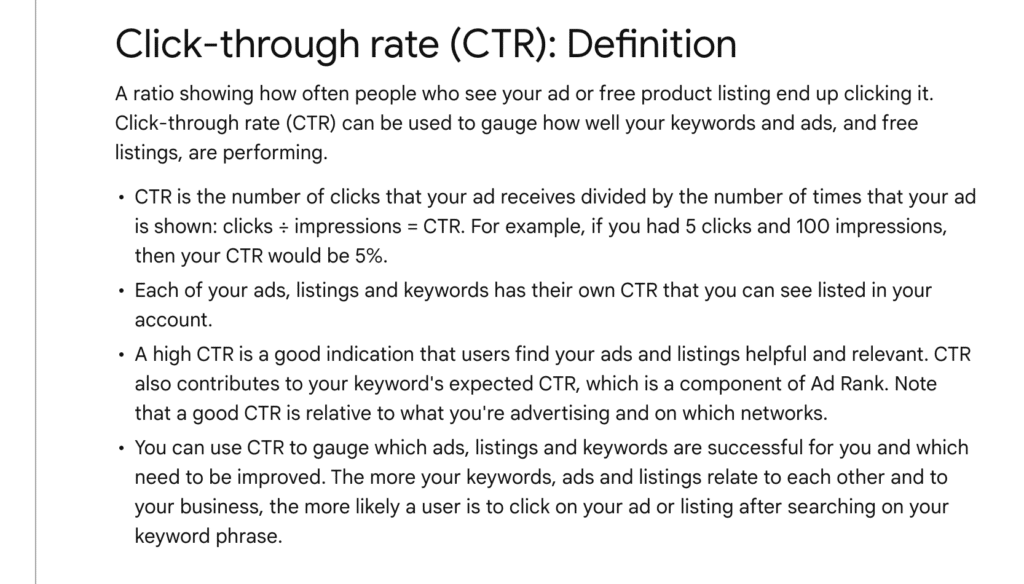Welcome to today’s blog post, where we’ll dive into the fundamentals of Google Ads and explore an essential topic often overlooked—click-through rate (CTR). As a professional in the digital marketing world, you know that CTR is a crucial metric that can make or break your ad campaigns. So, what exactly is CTR, why is it essential, and where can you find it? We’ll address these questions and more, including what constitutes a good CTR and another critical metric you should monitor.
What is the click-through rate (CTR)?
Coming straight from the horse’s mouth, Google states CTR is the number of clicks your ad receives divided by the number of times your ad is shown.
Clicks received are divided by the number of times an ad is shown, which equals impressions.
Therefore, clicks divided by impressions equals CTR.
For example, if you had five clicks and a hundred impressions, your CTR would be 5%.

CTR is a crucial metric for measuring the effectiveness of your ads in enticing people to click on them. A low CTR coupled with high impressions could signal that your ad is missing the mark with your target audience, leading to a lack of relevance.
It’s important to note that a lower CTR can also result in a lower quality score, which can impact your ad position and cost. On the other hand, a good quality score can lead to better ad placement and potentially cheaper clicks.
To improve your CTR, review your ad copy and test different variations. Pay close attention to your keyword insertions and make sure they’re relevant to what you’re offering. By doing so, you can ensure your ads are engaging and appealing to your audience, resulting in more clicks and a higher CTR.
Where you can find CTR inside the Google Ads platform
There are three areas inside the Google Ads platform where you can view CTR.
You can find your CTR at the campaign level.
You can also view it at an ad group level.
And finally, at the keyword level.
Overall, the average clickthrough rate for eCommerce is about 4–6%. And anything over that is considered a good or excellent CTR. With the following account, we’ve got about a 13% click-through rate, which is great for this industry.
Why having a high click-through rate is not always a good thing
When analyzing the effectiveness of your ads, it’s essential to consider another crucial metric: conversion rate. While a high CTR is great, if your conversion rate is low, it means that people are clicking through to your website but not taking any action.
To determine why this is happening, it’s important to do some detective work and identify potential conversion roadblocks. Tools like Lucky Orange can help you track and analyze the user experience on your website, such as identifying when users start dropping off and what might be causing it, for example uncompetitive pricing or unexpected shipping costs.
By looking at both metrics and understanding the user experience, you can diagnose potential issues and make the necessary adjustments to improve your conversion rate. Remember, having a high CTR but a low conversion rate is not ideal, but by taking a closer look and addressing any issues, you can turn things around and achieve better results.
Author
Ashleigh is a Content Writer at Solutions 8. When she isn’t writing, you can find her in the Alps sipping the finest wine, walking in the mountains, or admiring the crystal blue waters of the river flowing near her home. She’s an avid Pokemon card collector and a massive fan of anything that screams ’90s nostalgia.
 Ashleigh Stearn
Ashleigh Stearn












